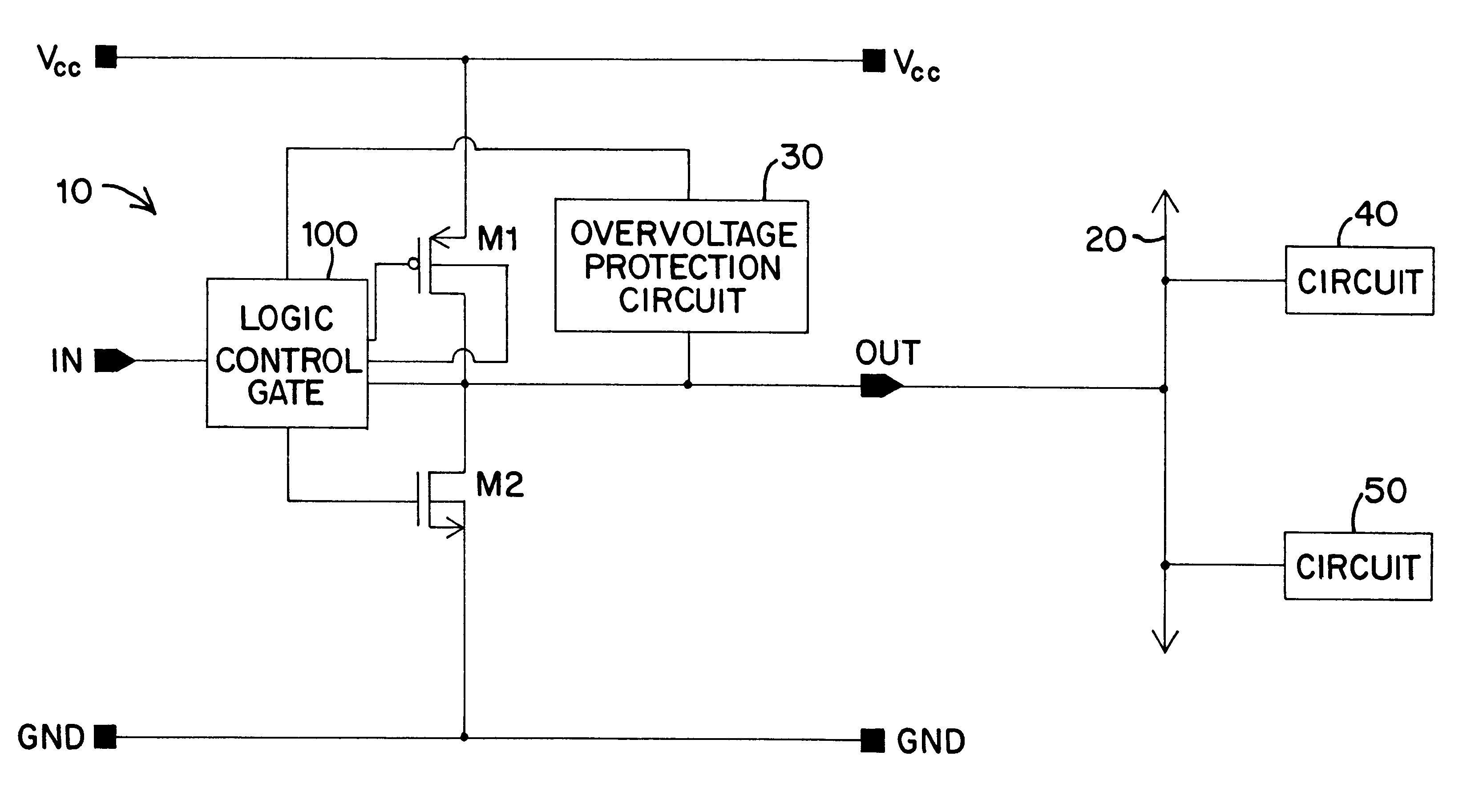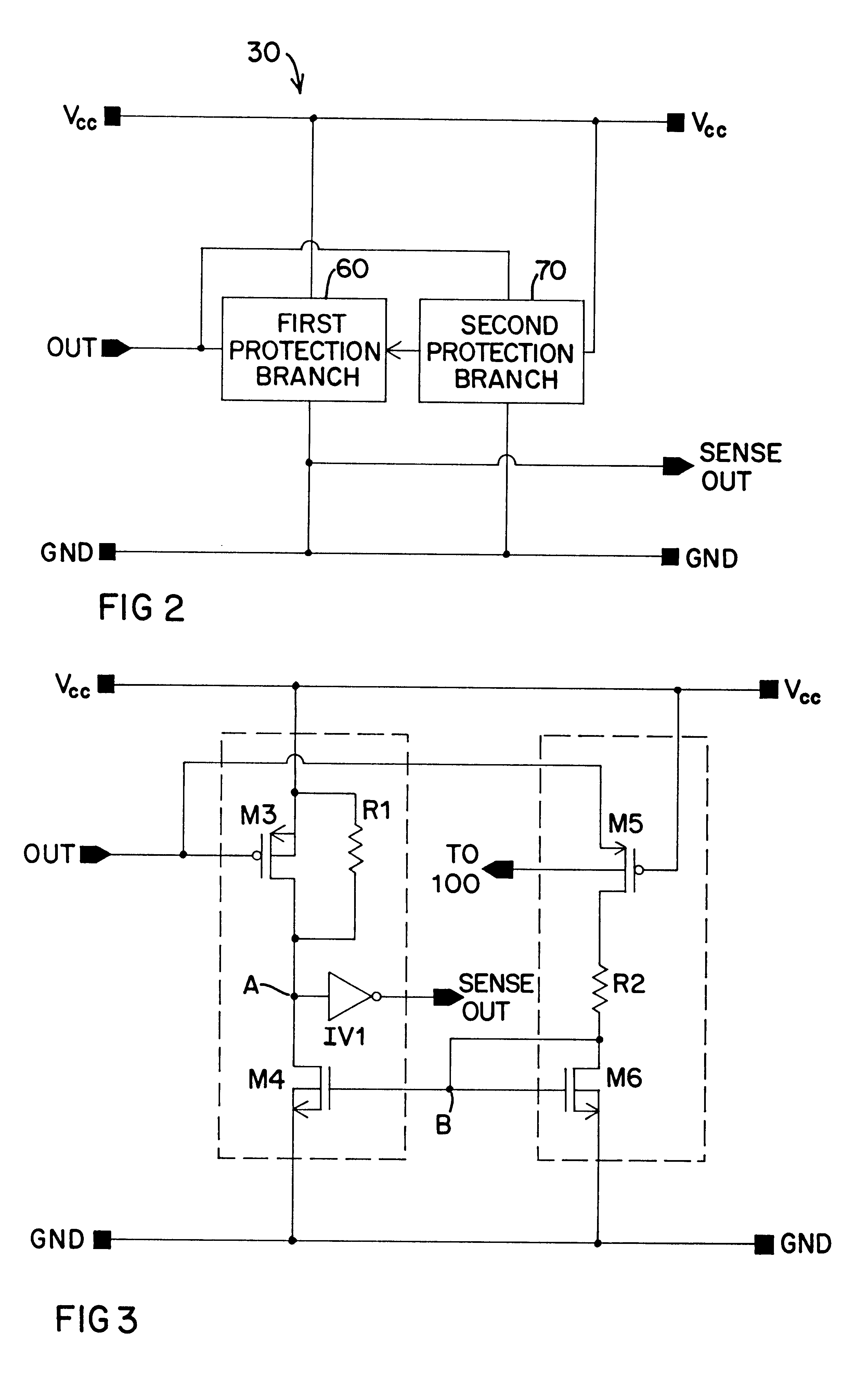Overvoltage protection circuit with overvoltage removal sensing
a protection circuit and overvoltage detection technology, applied in the field of output circuitry, can solve problems such as undesirable current passing from the bus, 0v may experience a significant overvoltage event, and active devices may not be powered at equivalent potentials
- Summary
- Abstract
- Description
- Claims
- Application Information
AI Technical Summary
Benefits of technology
Problems solved by technology
Method used
Image
Examples
Embodiment Construction
An output circuit 10 having pull up PMOS transistor M1 and pull down NMOS transistor M2 is shown in FIG. 1 coupled to a common bus 20. The output circuit 10 includes an input node IN for receiving an electrical signal to be transmitted to the bus 20 via output node OUT. Transistor M1 has a gate coupled through a control logic gate 100 to IN, a source coupled to high-potential power rail V.sub.cc, a drain coupled to OUT, and a bulk region also coupled to the control gate 100. Transistor M2 has a gate also coupled to IN through control gate 100, a source coupled to low-potential power rail GND, and a drain coupled to OUT. The circuit 20 further includes overvoltage protection circuit 30 coupled through the logic gate 100 to the gate of M1 and the output node OUT. Although the output circuit 10 is shown in FIG. 1 as a MOS-based output device, it is to be understood that the protection circuit 30 of the present invention may be used with bipolar and mixed MOS-bipolar output circuits tha...
PUM
 Login to View More
Login to View More Abstract
Description
Claims
Application Information
 Login to View More
Login to View More - R&D
- Intellectual Property
- Life Sciences
- Materials
- Tech Scout
- Unparalleled Data Quality
- Higher Quality Content
- 60% Fewer Hallucinations
Browse by: Latest US Patents, China's latest patents, Technical Efficacy Thesaurus, Application Domain, Technology Topic, Popular Technical Reports.
© 2025 PatSnap. All rights reserved.Legal|Privacy policy|Modern Slavery Act Transparency Statement|Sitemap|About US| Contact US: help@patsnap.com



